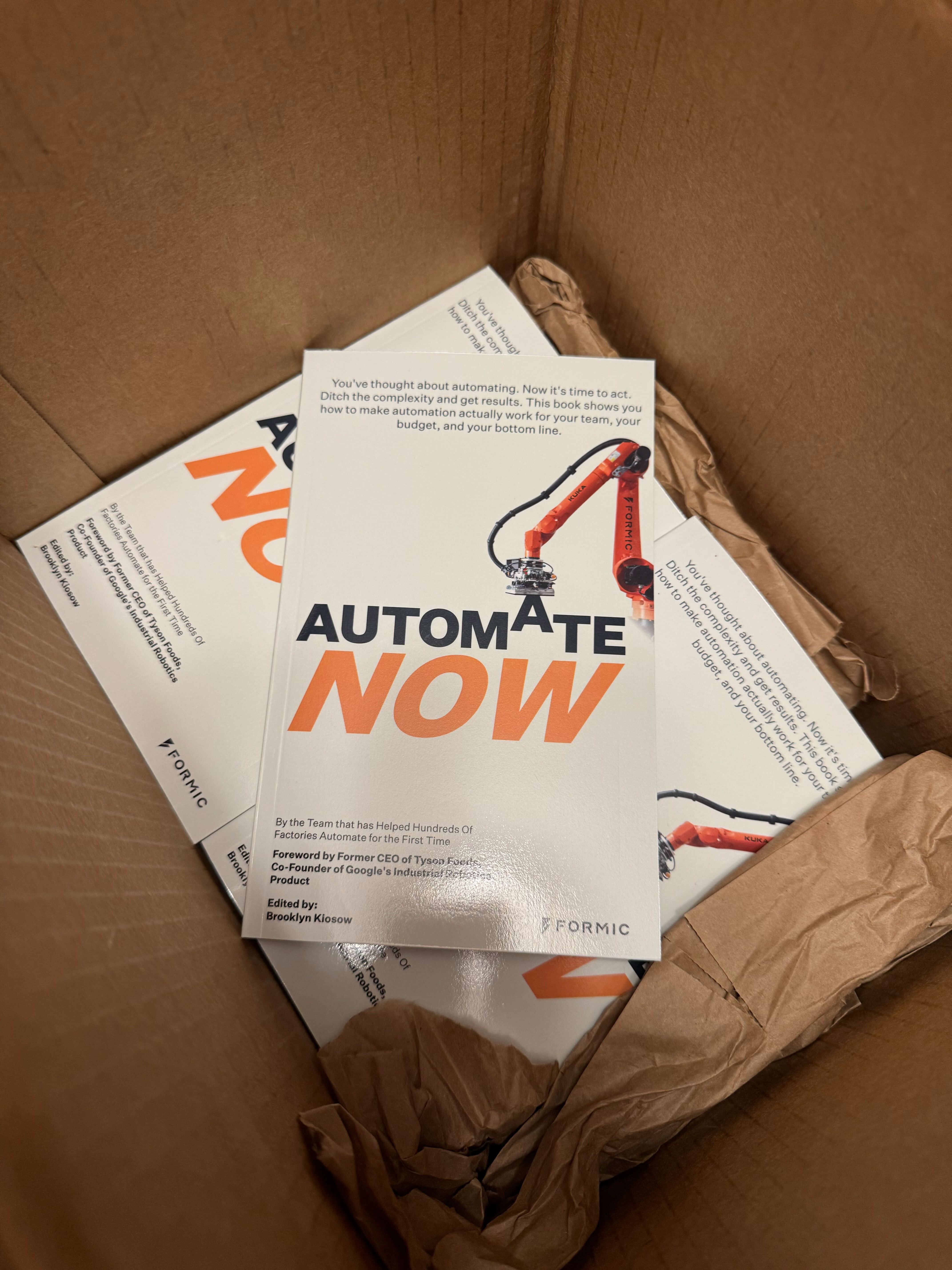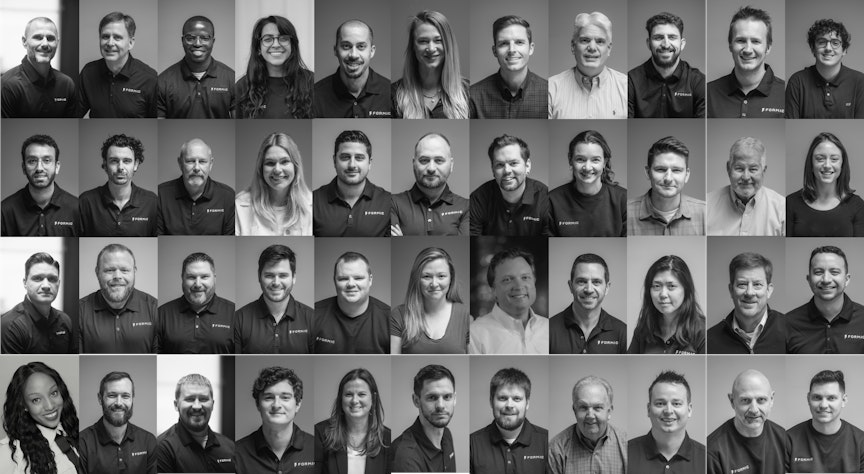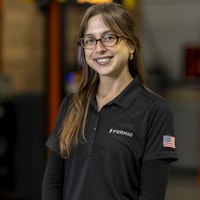We recently published our full-length book, Automate Now, built on 300+ years of combined manufacturing expertise. Below is a sneak peek at one of the most valuable chapters, TCO vs. ROI: What Really Matters in Automation, a deep dive into why ROI doesn't tell the full story of the true cost of automation.
Want the entire book? Get your free copy here.

TCO vs. ROI: What Really Matters in Automation
When manufacturers start on their automation journey, one of the first steps is to identify their options and evaluate the potential return on investment (ROI). It’s natural, we want to know how quickly a new automation system will “pay for itself” and start generating returns.
ROI is traditionally calculated using a simple, familiar formula:
Current Value of Investment - Cost of Investment
______________________________________
Cost of Investment x100
The “current value of investment” includes productivity increases, cost savings, and the current market value of the asset. The “cost of investment” includes acquisition costs, operational costs, and depreciation.
At first glance, this equation provides a tidy, percentage-based answer that helps justify an automation purchase (and buying things is what we are all used to — “it’s the way we’ve always done it”). ROI calculations, however, are static, one-dimensional assessments of what is a more nuanced, complex decision. They don’t account for inputs such as spare and replacement parts costs, non-standard service labor costs, the costs of downtime, and even the probability that a major component or system will fail, yielding very high costs.
Consider Total Cost of Ownership (TCO) as a More Accurate Assessment
To make smarter automation decisions, manufacturers need to go beyond ROI and look at the Total Cost of Ownership (TCO). TCO offers a holistic, long-term view of what automation will truly cost and what it will deliver over the full life of the asset.
Why does this matter? Because automation systems come with hidden costs that ROI alone doesn’t capture:
- Non-standard service labor: emergency repairs, system tuning, specialized diagnostics
- Downtime costs: both the direct cost of idle equipment and the opportunity cost of missed production
- Change risk: the cost of reconfiguring equipment when your production needs shift
- Failure risk: the probability and cost of major component failures or catastrophic downtime
- Spare and replacement parts
- Software and firmware upgrades
A more accurate equation would include purchase cost, maintenance service, spare parts, engineering orders, and utility costs.
Cost of Investment
______________________ x100
Net Benefit from Automation
The “net benefit from automation” includes productivity gains, labor cost savings, reduced downtime, and increased asset value. The “cost of investment” includes acquisition costs, installation, maintenance, and operational expenses. This equation takes TCO into account.
Why TCO Is the Smarter Metric
Traditional ROI looks attractive on paper: it’s quick, easy, and often optimistic. But focusing on ROI alone can lead to underestimating risk, overlooking hidden costs, and choosing solutions that cost more over time.
TCO, on the other hand, forces you to consider the full financial impact over the asset’s life, helps you evaluate maintenance models, shines a light on flexibility vs. rigidity, and encourages smarter budgeting, rather than being blindsided by unplanned costs.
What Happens When You Ignore TCO
To make this concept even more tangible, let’s look at two manufacturers: both mid-sized CPG producers, both eager to automate, and both with limited in-house engineering expertise. Neither has a dedicated team to deploy, optimize, or maintain complex automation equipment. Their needs and constraints are remarkably similar.
- Manufacturer A chooses to buy a standard automation system for the depreciation, and because they like owning things. They hire an integrator to handle installation, and once the equipment is in place, they’re largely on their own. Maintenance? They’ll figure it out as they go. System tuning and optimization? Maybe later, as time allows. If their production needs change or when the system underperforms, they’ll cross that bridge if they need to. The system is in, it’s running, and their purchase isn’t immediately realized, but they are on the path to return on their investment.
- Manufacturer B opts for a fully managed automation provider. The provider scopes the solution to fit their current and expected future needs. They handle deployment, integration, and ongoing optimization. The system comes with built-in real-time performance data, predictive maintenance, and flexibility to swap or upgrade equipment if production requirements shift. The system is in, it’s running, and there’s a noticeable return right away because they didn’t put capital toward an equipment purchase, and typically utilize existing temp labor budget to fund the service.
Fast forward two years:
- Manufacturer A is realizing the depreciation of the system, but is finding itself working more for the equipment than the equipment is working for them. The system hasn’t kept up with evolving production demands. Maintenance is reactive, a series of unplanned service calls that create downtime, frustrate operations, and come with hefty price tags. They’re facing mounting costs to retrofit or replace parts of the system they’ve already paid for once. They’re constantly fighting to find and retain qualified maintenance technicians and robot programmers. Their ROI looked fine on paper, but the hidden costs of ownership are eroding value fast.
- Manufacturer B is staying focused on what they do best: making their products, while letting the automation experts maintain and optimize the solution. Their system continues to meet production needs because the provider adapts it as requirements change. Downtime has been minimal, costs have been predictable, and the team has been able to focus on production rather than firefighting equipment issues. Their TCO evaluation up front helped them make a choice that’s paying off every day. On top of all of these benefits, the manufacturer’s employees are learning more about automation every day and becoming truly comfortable with operating the automation equipment, making the next automation project to boost productivity easier.
TCO isn’t just an accounting exercise. It’s the lens that helps manufacturers choose automation solutions that grow with them, deliver sustained value, and avoid the hidden costs that can drain resources over time. In automation, what really matters isn’t just how quickly you pay back your investment, it’s how well your investment performs for the long haul.
That’s why, at Formic, we emphasize TCO when helping manufacturers choose automation solutions. Because real value isn’t measured in months to ROI, but in years of sustained performance, minimal surprises, and maximized output.
Want to read more of the book? Get your free copy here.


